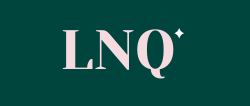Embroidery machines make embroidery much simpler. By eliminating manual labor involved in creating designs on clothing such as caps, hats and polo shirts for embroidery designs to be created more quickly and efficiently.
However, they require certain computer skills and the ability to edit existing designs within specific software programs. Furthermore, their automatic functions such as advanced needle threading and reinforcement/reverse stitching save time – these save even more precious seconds!
Stitching
Best sewing and embroidery machine can stitch on virtually all sewable fabrics, often including names, initials and lettering of any kind as well as ornate fashion embellishments like flowers and hearts. Furthermore, embroidery can also be performed on soft accessories like hats and shirts.
Embroidery refers to a form of looped interlock stitch that has long been the staple of sewing machines, largely thanks to computerized embroidery formats which contain instructions that tell machines when to move needle-bar (jump), cut thread or cut other actions like moving.
Even the most advanced embroidery machines require users to set up items and load designs prior to stitching, with some machines even requiring threading the needles and loading thread colors before beginning stitching. Users can take advantage of expanded design editing features such as pattern layout, rotation, mirror imaging, merging patterns together and re-sizing – plus users can see and edit designs on a large, 3.7″ Sew Smart color touch screen display screen display!
Threading
Before computers became accessible, embroidery was completed by punching designs onto paper tape and running them through an embroiderer that stitched them onto fabric. This process could be laborious and one mistake could ruin an entire piece of fabric.
Computerized embroidery machines take digital embroidery files in a specific digital format and stitch designs onto fabric framed with stabilizers with precise accuracy – something your grandmother would take her week or more to do by hand!
Thread the needles of your embroidery machine using different colored thread for each section of your design, using an appropriate color for each. Pull up the needle threader lever, slide your thread from behind to front along a path from back to front of machine until there’s an opening on either right or left side for thread to pass through, and insert into slot in right or left machine – you are now ready to begin embroidery! Keep in mind you may also require a spool cap for protection during embroidery process.
Hooping
Hooping involves setting up an embroidery hoop on an automatic machine for sewing. Your embroidery machine will stitch designs on fabric within the hoop using stabilizers such as muslin to stiffen and secure fabric while embroidering designs on it. In order for it to function effectively, make sure the inner hoop holds it fabric wrong side up while outer hoop covers it both before hooping begins.
Your embroidery machine’s manual or website should provide details regarding what hoop sizes it supports; typically 4 x 4, 5 x 7, and 6 x 10 inch hoops will suffice.
Once the design is complete, cut the threads and unhoop from your machine. Trim away excess fabric, stabilizer and loose threads before cleaning your embroidery hoop in preparation for another project.
Cleaning
While it is impossible to completely prevent all embroidery machine maintenance issues, using top quality thread, embroidery stabilizer and fabrics will go some way towards doing just that. Furthermore, storing thread in bins rather than shelves will reduce dust contamination in your machine and help ensure its long term effectiveness.
It is essential to regularly clean your machine, particularly after undertaking any project. Doing this will remove dust, lint, and debris that has accumulated within it and prevent your machine from working too hard, leading to its eventual malfunction and eventual burning out.
Embroidery machines are more complex mechanically than many home appliances and require special training to repair. As a result, embroidery machine repairs tend to cost significantly more than sewing machine repairs. Brother’s Dealer Locator or Singer’s may offer authorized repair technicians nearby who specialize in both home, serger, and coverstitch machine repair; otherwise you can visit your local sewing machine store and search there for one instead.
